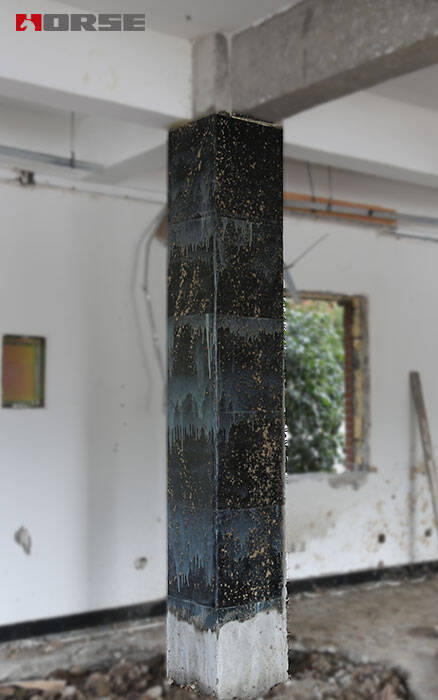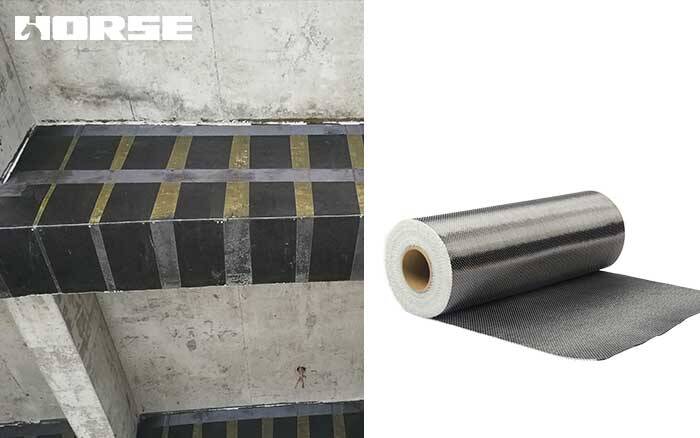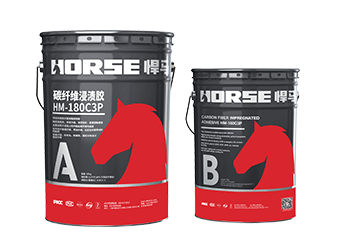Solutions
Horse Construction offers full range of structural strengthening materials with technical supports, documentation supports, products supports, project supports.
Seismic Retrofit by Carbon Fiber Reinforced Polymer(CFRP) Sheet | Horse Construction

Seismic Retrofit
Seismic retrofit is the modification of existing structures to make them more resistant to seismic activity, ground motion or soil failure caused by earthquakes. With an in-depth understanding of the seismic requirements of buildings and our recent experience with major earthquakes near the city center, the need for seismic reconstruction has been well recognized. Before modern earthquake laws and regulations were adopted in developed countries (the United States, Japan, etc.) and many other regions of the world (Turkey, China, etc.) in the late 1960s. Many structures were designed without sufficient details and reinforcement to prevent earthquakes. . In response to this imminent problem, various studies have been carried out. The most advanced technical guidelines for earthquake assessment, reconstruction and restoration have been issued all over the world. These codes must be updated regularly to adapt to natural and man-made disasters.
Seismic reinforcement technology skills
1 External post tension
2 Basic isolator
3 Auxiliary damper
4 Tuned mass damper
5 Sloshing tank
6 Active control system
7 Temporary increase of structural support/reinforcement
1) Connection between buildings and their expansion addition
2) External reinforcement of the building
3) outer concrete columns
4) Filled shear truss
5) Large external structure
There are many methods available for seismic reconstruction of buildings, including partial expansion with concrete and/or steel, adding more members, such as new shear walls, beams or columns, basic isolation or supporting frames. Although these methods are very effective in improving building performance, they may cause space loss, prolonged downtime during construction, or have a greater impact on the operation of occupied buildings.
Carbon fiber reinforced polymer(CFRP) is recognized as an effective seismic reconstruction material for existing concrete buildings.

There are many seismic reinforcement methods, but more and more owners and reinforcement companies will choose to use carbon fiber reinforced polymer(CFRP) strengthening, and this reinforcement method can not only improve efficiency, but also greatly save costs.
FRP materials consist of high-strength fibers in a polymer matrix. The fiber provides strength and stiffness, and the matrix provides load transfer and environmental protection for the fiber.
FRP material has a high strength-to-weight ratio, making it an ideal material for seismic reconstruction. They do not add a lot of mass to the structure, but they can be designed to add ductility, confinement, instantaneous or shear capacity to existing structural members. This allows local reinforcement without having to consider transferring additional weight to the foundation. FRP can also be designed to increase strength without changing the stiffness, thereby minimizing the extent of additional analysis of the structure after reinforcement. FRP materials add a minimum depth to the structure, and the average applied thickness is less than 1/4 inch.
The seismic reinforcement of carbon fiber reinforced polymer(CFRP) has the following advantages:
1) Excellent mechanical properties can be effectively applied to various forms of structural reinforcement, including bending, shearing, compression, fatigue, earthquake resistance, wind resistance, crack control and deflection expansion, and improvement of structural toughness.
2) Excellent chemical stability, so that the post-repair and reinforcement structure has strong acid, strong alkali, salt, and water erosion UV capabilities; sufficient ability to adapt to temperature changes.
3) The material is light and strong, the volume of the structure cannot be increased, and the additional weight of the structure can be ignored. This is not the traditional way.
4) The construction process is simple, can be operated with small electric tools, and the construction space is small. The construction progress is fast, the construction period is short, and it can be operated under continuous traffic vibration conditions. As a result, the time of work stoppage, work stoppage, and traffic opening is greatly shortened, and economic losses and social impacts are greatly reduced.
5) Because the material is soft, it is easy to stick with the structure shape. The shape of the structure remains unchanged after reinforcement. At the same time, it is convenient to paint with the required color, without showing signs of reinforcement.
You can find anything here you are in need of, have a trust trying on these products, you will find the big difference after that.

Good impregnation carbon fiber adhesive for applying carbon fiber reinforced polymer(CFRP) wrap for structural strengthening

High strength, unidirectional carbon fiber fabric pre-saturated to form a carbon fiber reinforced polymer (CFRP) fabric used to strengthen structural concrete elements.

High strength, unidirectional carbon fiber sheet pre-saturated to form a carbon fiber reinforced polymer (CFRP) sheet used to strengthen structural concrete elements.